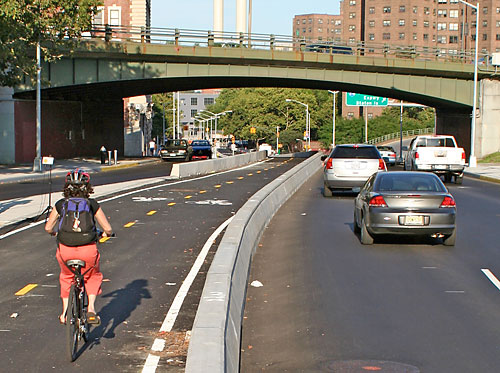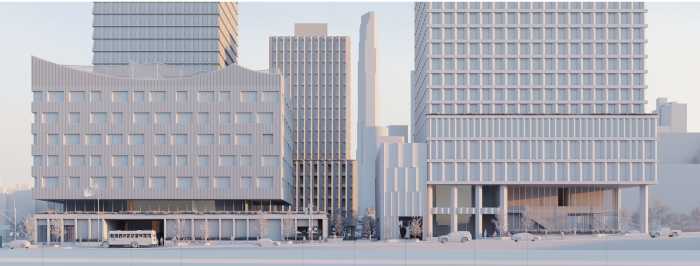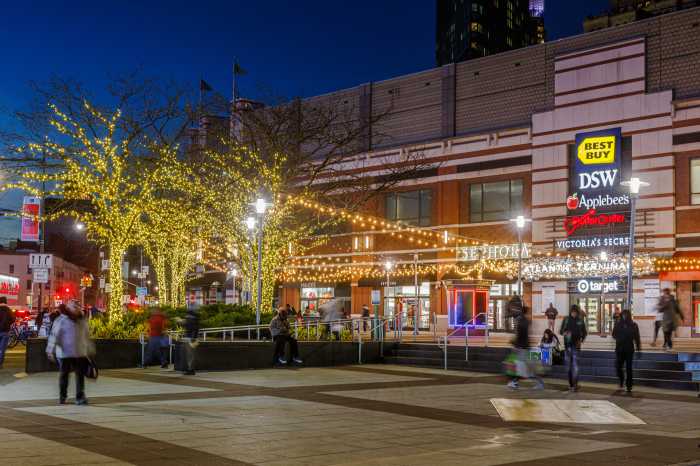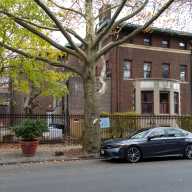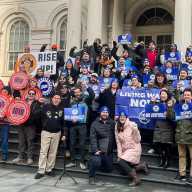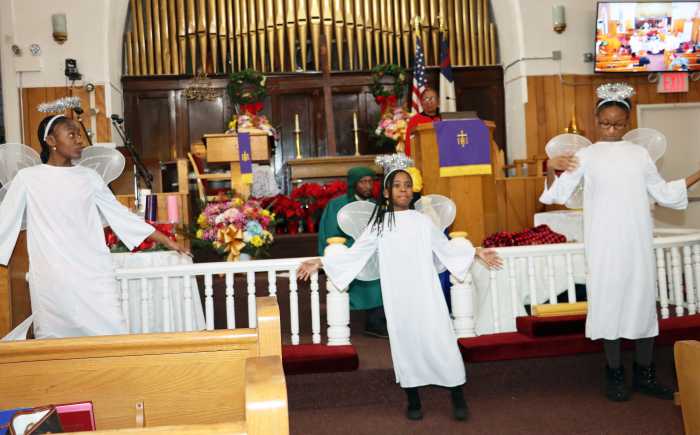For the first time in my years as an urban biker, I finally felt safe the other day.
I was on Sands Street between the Navy Yard and the Manhattan Bridge, where the city plunked down some real money — $5 million — to build the first truly protected bike path on a Brooklyn street.
For most of the route from the bridge, high cement barriers prevent cars from even accidentally crossing over into defenseless riders like me. And even when those barriers disappear further east, the lane itself is still raised above the car traffic, affording more protection than all those white lines with the cyclist silhouette that the city has been laying down for the past three years.
All it took was the near-death experience of a fellow pedal-pusher to make it happen.
Back in March, 2005, Noah Budnick of Transportation Alternatives was riding along the now-safe strip when he hit a pothole and fell head over handlebars.
He didn’t wake up for three days. When he did, he was in the ICU at Bellevue.
“I was near death, depending on whom you ask,” Budnick said after the ribbon cutting on Sands Street. “I fractured my skull — and I was wearing a helmet.”
Budnick isn’t so egotistical to believe that the city created the Sands Street lane just because he nearly died in the same spot, but clearly the crash played a role. The city issued its press release announcing the new protected lane one month after Budnick came out of his coma.
At a ceremony last Friday, Transportation Alternatives employees and supporters were calling the new path “the Budnick bikeway,” but the route’s namesake wasn’t having any of it.
“I’m just gratified that it was built,” he said.
I am, too. After visiting Amsterdam earlier this year in The Bruekelen Paper’s now-legendary fact-finding mission, I had become convinced that Brooklyn cyclists would forever be second-class citizens of the world, where riders, not drivers, enjoy strength in numbers. In Holland, all the lanes are like Sands Street, cars are limited to 18 miles per hour in the city, and no one wears helmets.
But in Brooklyn, the city’s painted bike lanes seem to have been conceived by a back-room bureaucrat named Wilbert Nillee (also known as Willy). Why, for example, is there a bike lane on narrow Fifth Avenue? Or on Jay Street in the heart of Downtown? Or on the left side of Bergen Street when the vast majority of bikers need to make a right turn onto Smith Street to get to one of the two bridges?
For too long, it appeared that very little of this had been truly thought out.
But with Sands Street as a model, the city has begun to get it right.
Too bad Noah Budnick almost had to die for someone to start the process.


